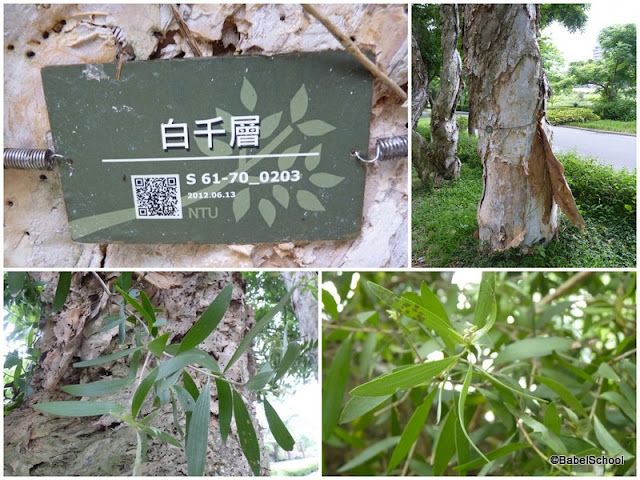In Taiwan, like in the USA, universities are located on big campuses. I've always liked strolling around these nicely kept parks, full of trees and neatly cut lawns. And I've always wanted to study at a university with a campus like that. Unfortunately my alma mater did not have a big, nice campus - it was tiny with just a few buildings and even less trees. We had lectures scattered around the whole city.
In Taiwan, even the campus of the largest and most prestigious university, which is located in the middle of Taipei, looks like a big park. And that's where we had our nature class this week - National Taiwan University 國立台灣大學.
This time the teacher prepared a few nature DIY activities for the kids.
First one was made with the fruits of Formosan gum tree. Kids had to find the prickly fruits and sticks and then stick the fruits at the end of the sticks to make ... fruit on a stick or ... bee's antennae :-) .
Later kids made a bookmark with fruits of two other plants, Australian pine tree and ...
And here is our tiny pineapple:
We also tried writing on the soft bark of a paperbark tree / Melaleuca / 白千層.
Look at the beautiful butterfly the teacher made out of two leaves:
Kids also picked up the seeds of paciorecznik indyjski / Canna indica / 美人蕉.
They also enjoyed picking up the long "leaves" of hoop pine / Araucaria.
I was quite intrigued by the holes in this leaf, apparently the taste of the leaf changes, bugs to avoid not-so-tasty parts have to eat it bit by bit.
This time we didn't see many creepy crawlies (I guess there were too many people around).
 |
| Euproctis sericea, 雪黃毒蛾 |
This bug is fortunately dead. We wouldn't like to come face to face with it as it can squirt some unpleasant stuff which will irritate the skin and hurt eyes.
Pigeons were doing their love dance:
And kids were fooling around:














Comments
Post a Comment